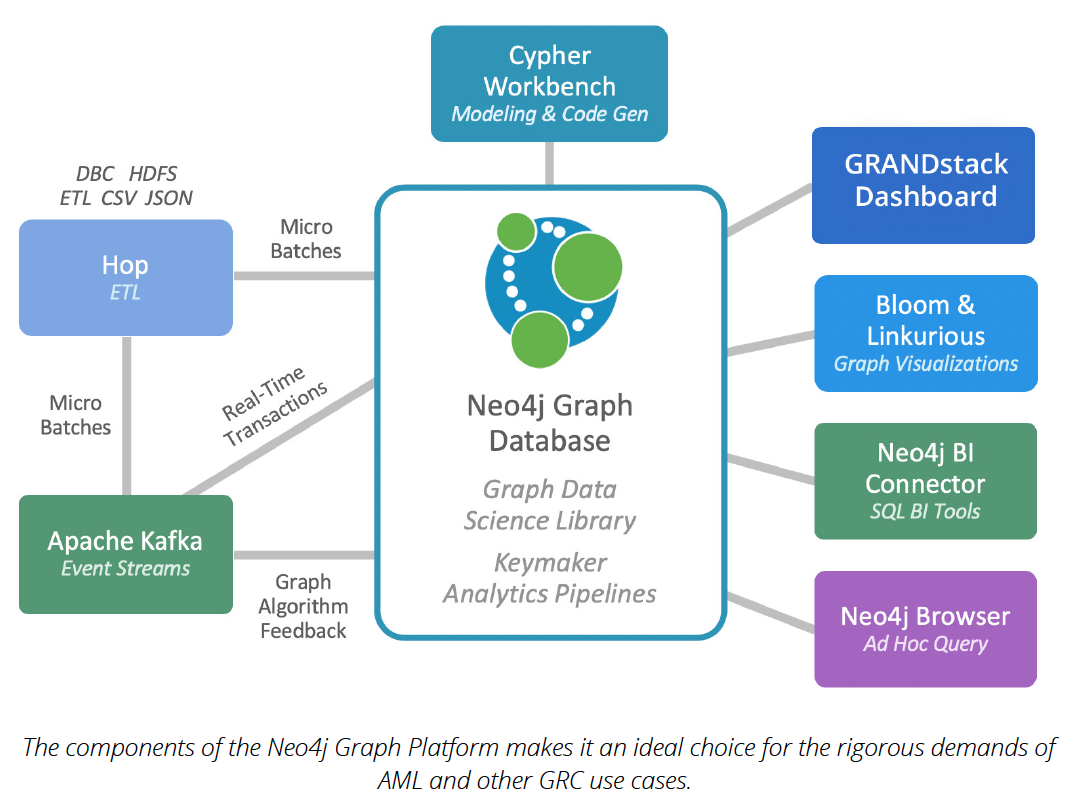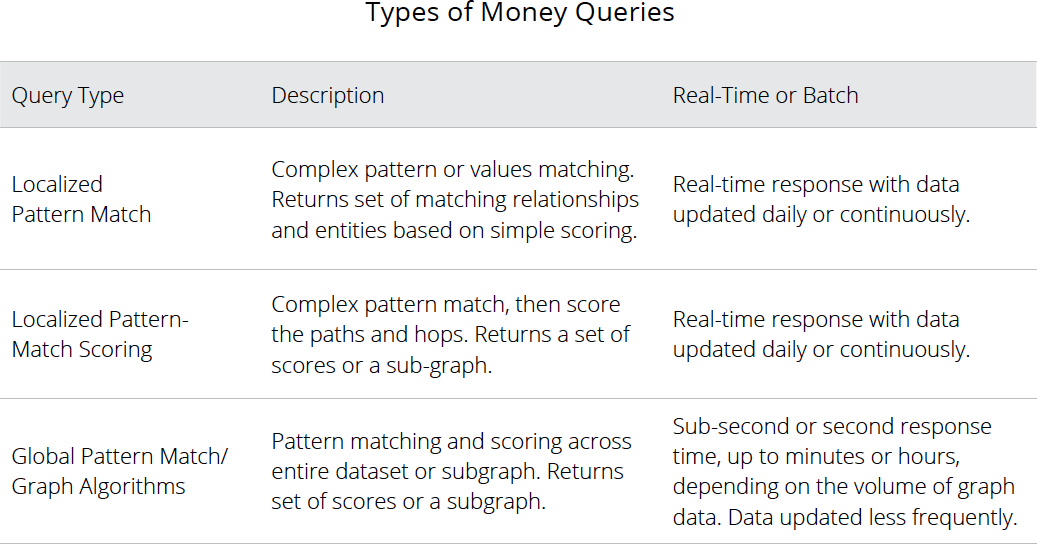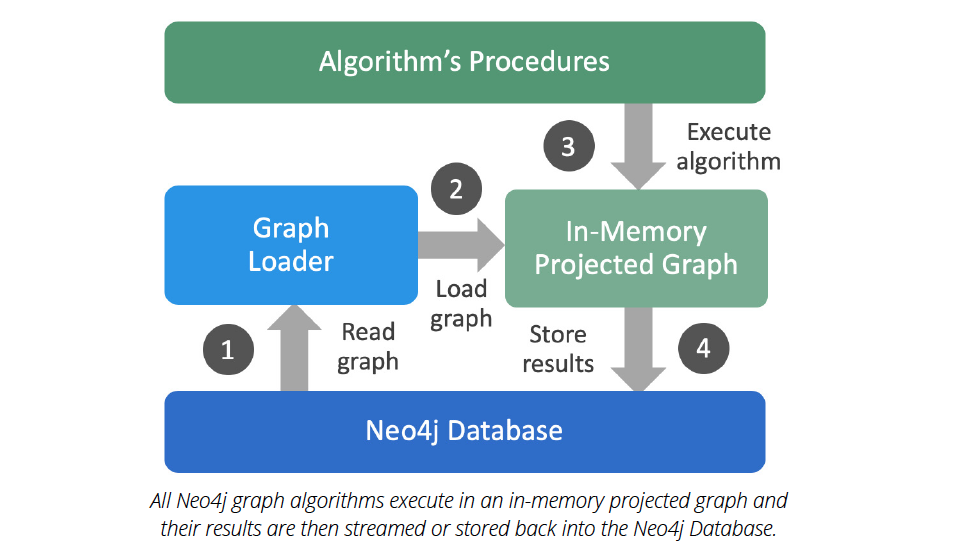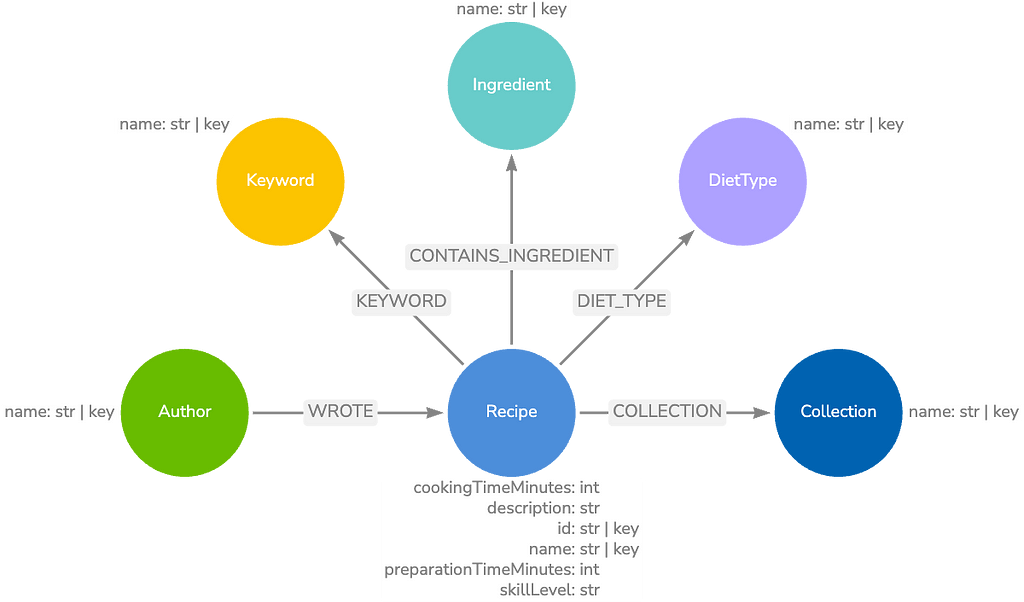Combating Money Laundering: Enterprise AML Technology

Enterprise Account Manager
5 min read

In this third blog in our six-part series on using graph technology to fight money laundering, we examine specific characteristics and components of the Neo4j graph platform that make it ideal for addressing the stringent requirements of anti-money laundering.
Neo4j: The Only Enterprise Graph Database
Traditional AML technologies store data in tables of rows and columns, or in documents. Pattern matching requires the data to be retrieved, parsed and JOINed. To attempt all this, they rely heavily on indexes. While fast performance might be possible for simple pattern matching, it is impossible with complex patterns or large volumes of data.
In contrast to these other technologies, Neo4j stores data natively as a graph, an approach known as index-free adjacency. Each node directly references its adjacent nodes, acting as a micro-index for all nearby nodes. As a result, Neo4j traverses paths with blazing speed and does not rely on indexes at all for the traversals, but rather, simply chases pointers in memory.
Because Neo4j natively processes data as a graph, nothing gets lost in translation while interrogating the graph. Neo4j’s end-to-end processing and retrieval is blazingly fast and accurate, even at extreme scale.
Neo4j is ideal for addressing the stringent requirements of anti-money laundering because it delivers:
- Blazingly fast query performance at extreme scale for detecting suspicious patterns and behaviors in real time
- In-memory analytics pipelines to provide scored results in real time
- Highly optimized data science library highlights communities and central entities at a high level
- Causal Clustering to ensure an always-available database and disaster recovery
- Data ingestion and management to process billions of records a day
- Trusted integrity and dependability through its ACID graph transactions
- Enterprise-grade security that is schema-based for fine-grained access, traversals and reads
- Extreme agility, extensibility and customizability from its whiteboard data models and Cypher query language
Neo4j: The Only Enterprise Graph Platform
Neo4j provides a flexible and robust end-to-end graph platform that extends from AML to other global risk and compliance (GRC) areas that use a lot of the same connected data. Neo4j further accelerates time to value by making it easy to integrate with its ecosystem.
Data Modeling Tool
Cypher WorkbenchModel the graph and synchronize Neo4j with the model. Also generate Cypher code and scripts.
Input APIs
HopMove source data the last mile into Neo4j via this robust, model-driven, open source ETL and orchestration tool. Hop connects directly to data sources via connectors or can pull files from a folder. Performs data validation, look-ups, normalization, scheduling, error handling, parallelization, logging/lineage, auditing and other manipulations.
Native Neo4j drivers
Feed data from applications written in modern languages and scripts such as Python, Java, JavaScript, .NET and Go. Community-driven drivers exist for other development languages.
Output APIs
Neo4j BI ConnectorDeliver direct access to Neo4j graph data from business intelligence (BI) tools such as Tableau, Looker, TIBCO Spotfire Server and Microstrategy using the Neo4j BI Connector.
GRANDstack: GraphQL, React, Apollo, Neo4j Database
Build custom dashboards via the GRANDstack.
Bloom Self-Service Graph Data Visualization
Explore and discover with no coding required using Neo4j Bloom.
Neo4j Browser
Construct Cypher queries and visualize results in the Neo4j Browser.
Native Neo4j Drivers
Feed downstream applications using language drivers for Neo4j Database.
Analytics
Neo4j Graph Data Science Library (GDSL)Deliver optimized graph algorithm performance at scale via GDSL.
Keymaker
Build queries for each step in an AML scoring process and pipeline the queries in memory.
Packaging
Package Neo4j frameworks for Windows, macOS and most common Linux distributions.Neo4j Advanced Money Queries
The table below explains the basic types of money queries used in the Neo4j AML Framework and how they can be used to build sophisticated AML detection algorithms.Pattern Matching with Graph Algorithms
Neo4j is the only native graph database that has a robust graph data science library which:
- Frees analysts from moving large volumes of data to integrate scoring algorithms
- Leverages relationships that were previously untapped by AI/ML pipelines
Similarity algorithms, such as Jaccard and Cosine, use relationships to preprocess data. These similarity and graph algorithms traverse the graph, in some cases multiple times. For this reason they all execute in an in-memory projected graph and their resulting computations are either streamed or stored back into the Neo4j Database. This makes the Neo4j Graph Platform optimal for executing, storing, retrieving and processing these algorithms.
Conclusion
Neo4j provides a flexible and robust end-to-end graph platform that extends from AML to other global risk and compliance (GRC) areas that use much of the same connected data.
Next week, in blog four of our six-part series on fighting money laundering with graph technology, we will give an overview of a reference implementation for building a simple solution.
Get My Solution Guide










